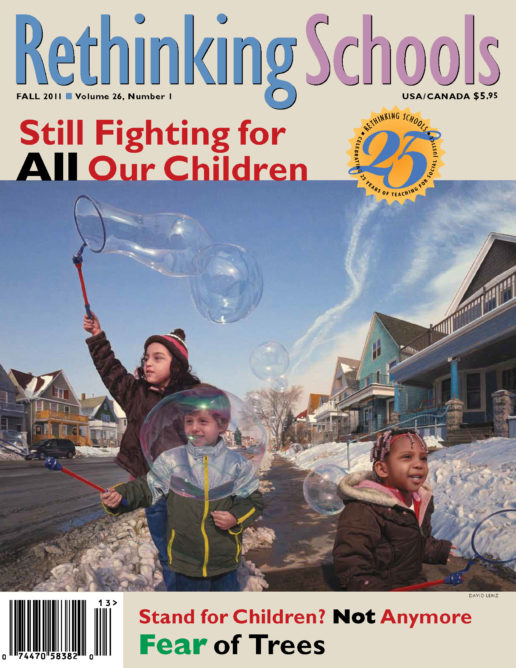Preview of Article:
Rethinking Schools and the Power of Silver
This 25th anniversary of Rethinking Schools can be thought of as its silver anniversary. Silver itself must be considered through contrasting lenses. On the one hand, as lessons in Rethinking Globalization teach us, silver and gold were the basis of Europe’s horrendous exploitation of Latin America. On the other hand, silver is often associated with powerful symbolism. A precious metal that has had significance in many cultural contexts around the world, silver symbolizes strength with flexibility (indeed, silver is stronger than gold), clarity, focus, vision, wisdom, and persistence. What better symbolism for Rethinking Schools over these last 25 years?

